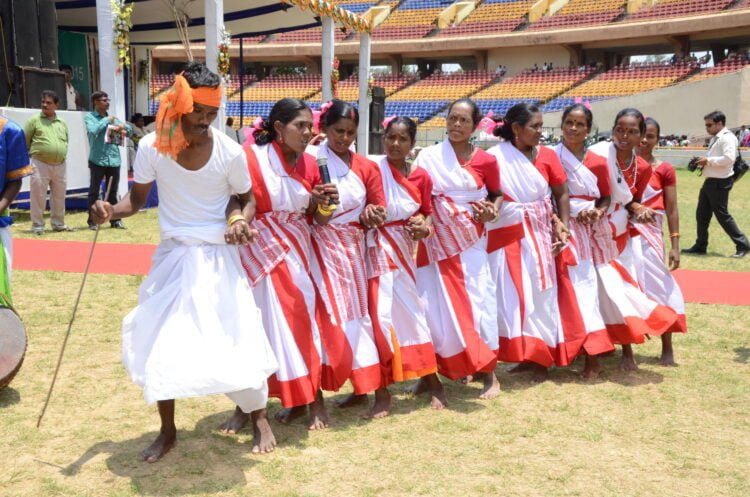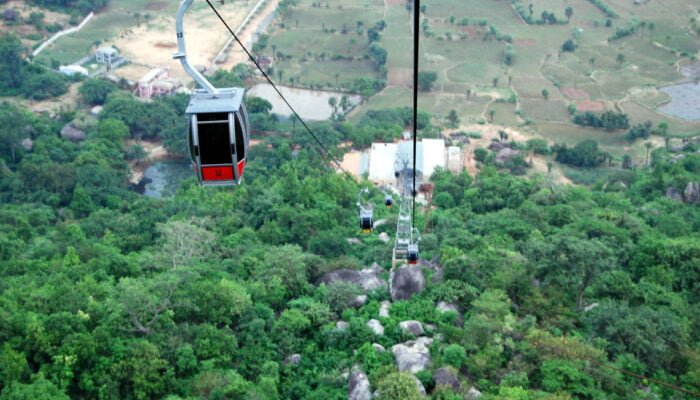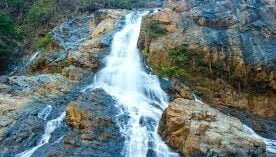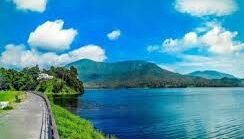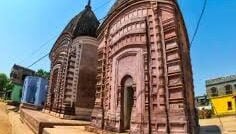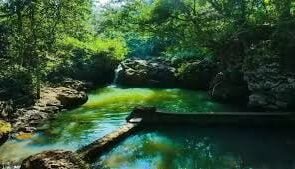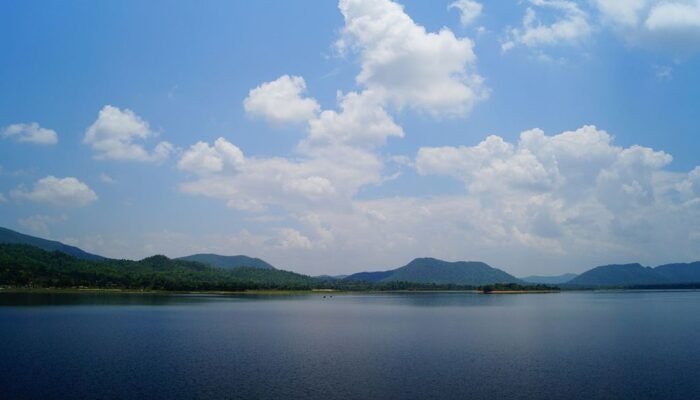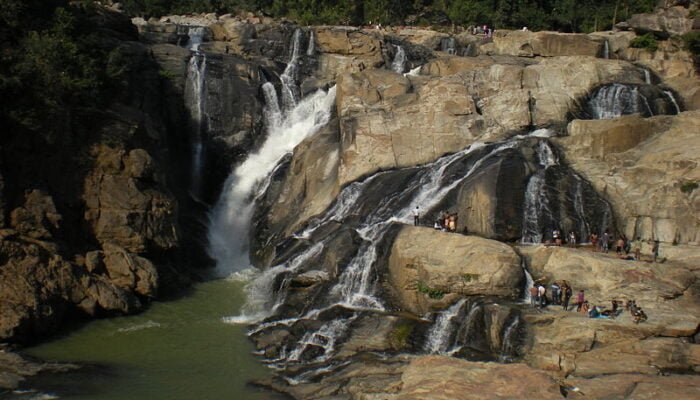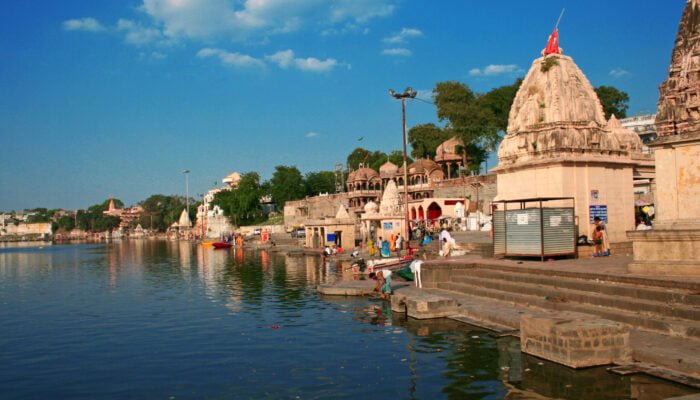No products in the cart.
JOYFUL JAUNTS IN JHARKHAND
Popular destinations in Jharkhand
Stepping away briskly from the shadow of Bihar in the year 2000 the state of Jharkhand has carved a special niche for itself as an independent entity in India’s tourism arena with a host of enticing experiences to dip into.
While knowledgeable travellers may be familiar with the charms of its numerous waterfalls, vast swathes of pristine forestlands and historic spots few may be aware that it’s also home to some hitherto lesser-known gems like its centuries-old megalithic sites and unique culinary offerings.
This culturally rich state is marked by its deep ethnic roots, being home to the Ho, Santhal and Oraon communities The state owes much of its prosperity to its great mineral wealth resources and its fantastic forest cover) that gives it its other name — Vanaanchal (land of forests).
Ranchi
Legendary brothers Poet-Laureate Rabindranath Tagore and Jyotindranath are inextricably bound to Jharkhand’s natural heritage. While the poet-laureate spent wonderful times soaking in the pristine beauty of the verdant hilly expanses of the Chhottanagpur Plateau and its balmy climes older brother Jyotindranath went as far as set up home on Moharbadi Hill, affectionately referred to as Tagore Hill by locals, in Ranchi. The hilltop offers stunning views of the sunrise and sunset over the city skyline.
Loaded with picnic baskets and a gaggle of excited children, families traipse off on weekends to enjoy leisurely picnics at the pretty rock garden studded with waterfalls and sculptures. Located close to the Kanke Dam its balmy environs offers a respite from the rush and noise of the city.
Driving around Ranchi you cannot miss the stamp of its colonial past in the scatter of its Raj-era architectural highpoints.
Do spend a little time at the unique Nakshatra Vana a zodiac garden, designed to feature the 27 stars of the Indian zodiac system.

PILGRIM’S PROGRESS
Deogarh
This ancient pilgrimage point is renowned for its Baidynath Dham situated in the Santhal Parganas and is much venerated as one of the 12 Jyotirlinga temples. The Hindu shrine of Shiva-Baidyanath is a colourful sight during the Maha Shravani Mela. Hindu devotees revere it as the only Kamanalingam- a lingam that has the power to fulfil all wishes. Basukinath Dham, located on the Deoghar-Dumka SH, 25 km northwest of Dumka is visited along with Baidyanath. Another pivotal point is the Shiva temple at Harila Joria,a popular tourist attraction. Trikut, where the Mayurakshi River originates, attracts many tourists.
Parasnath Hill
This old hill is home to several time-steeped Jain temples with the most the most ancient going back to 1775 and revered by both the Jain and Santhal tribal community. Located in the eastern end of the Chhottanagpur Plateau in Giridih district it is the most sacred pilgrimage destination for the Jain community as 23 out of 24 Tirthankaras (including Parsvanatha) are believed to have attained salvation here according to the Nirvana Kanda and other texts held dear by the Jains. The Santhals worship it as the home of their hill deity or Marang Buru and hold colourful celebrations during Baisakhi.
Maa Chhinnamasta Temple, Ramgarh
Located in Ramgarh district 80 km from Ranchi the Maa Chhinnamasta Temple is dedicated to the headless goddess. Also known as the Rajrappa temple the shrine is regarded for its tantric-style architecture.
Terracotta Temples, Maluti
An unmissable experience is a visit to the stunning terracotta temples (there are 72 which still remain from the original 108) in the Maluti village near Shikaripara in Dumka district on the eastern edge of the Chhottanagpur Plateau. Believed to date back to between 17th to 19th Centuries constructed during the Nakar Raj. They are remarkable for their historic, cultural and architectural importance. The site has been declared as one of the 12 most endangered cultural heritage sites by Global Heritage Fund.
Itkhori
Located in Chatra district Itkhori, 155km from Ranchi, has traces of history from Buddhism, Jainism and Hinduism. It is considered a sacred spot as Buddha is said to have considered it the place from where to begin his journey.
NATURE’S PLAYGROUND
Waterfall Haven
Ranchi is the perfect jump-off point for explorations of Jharkhand’s 14 waterfalls. Its biggest waterfalls are Dassam, Hundru, Jonha, Sita, Hirni, Panchghagh and Lodh. From Ranchi you can access five beautiful waterfalls which also open up a window to the state’s ethnic forested settlements.
The big one, of course, is Hundru Falls, 45 km away. The waterfall which drops from a height of 322 ft and is amongst the tallest waterfalls in the country. A leading picnic hub, the falls are powered by the roiling Subarnarekha River. The area around the falls is also a big magnet for treks and hikes. The area is of particular interest being developed as a beautiful ecologically sustainable adventure sports and activity zone.
The other falls you can visit in this 50-70km radius from Ranchi are Dassam Falls (45 km), the unique hanging valley Jonha Falls (45 km), Sita Falls (close to Jonha), Panchgagh Falls (55 km from Ranchi); Hirni Falls is 70 km away.
Bhagwan Birsa Biological Park, Ormanjhi
A 20km drive away from Ranchi brings you to the serene setting of the Bhagwan Birsa Biological Park, – rich in herbs and rare plants. The botanical half of the park spreads across area of 23 ha. Across the National Highway another sprawl of 81 ha marks the zoological end of the park. This serves as a natural habitat for 83 different species of mammals, reptiles and birds. variety of wildlife species. In place here is an important conservation programme for rare, threatened and endangered species of fauna and facilitating the linkage between ex-situ and in-situ conservation, breeding and rearing of endangered faunal species. It also endeavours to create greater public awareness and education in wildlife conservation. The park also rehabilitates and takes care of orphaned/injured/stray/sick animals, rescued from wild or from circuses, derecognized zoos etc. Green fodder is grown organically in-house within the park, which ensures fresh, nutritious and pollution free fodder for the herbivores of the zoo.
A big attraction at the park is the aquarium, probably the largest fresh water aquarium in the country housing about 1500 kinds of fish representing 120 species in 58 display tanks. It attracts an annual footfall of about 1.5 lakh visitors.
The Biological Park, a lovely eco-friendly leisure spot, is a beautiful memorial to the legendary Birsa Munda, a legendary tribal freedom fighter of Chhottanagpur area wherein he is venerated as a god or ‘Bhagwan’.
Patratu Valley
The one-hour drive from Ranchi to this gorgeous valley in Ramgarh district, comes highly recommended. Marked for its fantastic greenery and unpolluted, uncrowded environs, Patratu with the reservoir of the Nalkarni Dam is the perfect getaway for an idyllic holiday. The lake here is a big draw for a wide variety of avifaunal species, making it the perfect paradise for birdwatching enthusiasts. You can opt to stay at the Patratu Lake Resort, run by the Jharkhand Tourism Development Corporation.
Netarhat
Back in the day its verdant stretches and gentle breezes served as the perfect retreat for a summer sojourn for the Raj-era governor of Bihar and Odissa, Sir Edward Gait. Ever since Netrahat, sequestered amidst the balmy climes of the hilly expanses of Chhottanagpur Plateau, has become the haunt of streams of visitors, not just in summer but all year round. A four-hour drive from Ranchi transports you to an unpolluted setting of this pretty hills station marked by bridle paths that lead to picturesque groves and idyllic picnic spots with splendiferous views of the gorgeous surrounds. Magnolia Point unwinds a tale of how the love of an English governor’s daughter for a local tribal boy met a tragic end when she leapt off the rockface to her death because it was considered an impossible liaison. Magnolia Point along with Koel View Point are popular for their sunset viewings.
WORLD OF THE WILD
Visitors can go wildlife exploring by jeep safari into the heart of Jharkhand’s sal jungles on an escorted tour. The Palamau Tiger Reserve established in 1974, was one of the earliest tiger reserves to come under the umbrella of Project Tiger. It’s interesting to note that it has the distinction of being the first sanctuary in the world in which a tiger census was carried out as a pugmark count, as early as 1932 under the supervision of J.W. Nicholson, the then DFO, Palamau. Of the total area of 1129.93 sq km, 226.32 sq. km has been designated as the Betla National Park which also incorporates the unique Mahuadanr Wolf Sanctuary. This is India’s only wolf sanctuary. There are about 3,100 grey wolves (Canis lupus) left in India.
The Palamau Tiger Reserve is held in high regard for its astonishing biodiversity. The project area is constituted mainly of Sal forests, mixed deciduous forests and bamboo groves. The reserve zone is the watershed area for the Koel, Burha and Auranga rivers. Spread across an expanse of 1129.93 sq km at least 414.08 sq km of that area is marked as the core area with the remaining 715.85 sq km serving as the buffer area. Of the total area, 226.32 sq km has been designated as the Betla National Park. In the buffer zone, 53 sq km serves as the tourist zone.
Scattered across the verdant expanses of Palamau are remnants of ancient forts and monuments from the Chero Kingdom. A standout amongst these ruins is the Palamau Kila established by the dynasty’s most famous ruler– Raja Medini Rai (1661-1672). Palamau Tiger Reserve is now popular for stargazing enthusiasts as it offers one of the cleanest and pollution-free skies for astrophotography.
Hazaribagh Wildlife Sanctuary
Established in 1955 this 184 sq km sanctuary in the hills of the Chhottanagpur Plateau is home to tigers, panthers, wild boar, sambar, nilgai, chital, sloth bear and many avifaunal species. Just 90km away from Ranchi it also has a scattering of viewable Palaeolitic remains and rock-art caves discovered here. The tribal museum has on display several archaeological artefacts. The Kanerhi Hill (5km) and the Taliya Dam (55km) and Konar Dam (51km) can be fun trips to explore for their expansive vistas of great beauty.
Mystical Megaliths
Jharkhand’s hoary past is captured in the megaliths that have in the past rarely caught the attention of the tourist community. These spots are slowly gathering interest for history and archaeological buffs. Megaliths, for the uninitiated, are ancient structures, (think England’s legendary tourist hub—Stonehenge) created by people from prehistoric times. These oftentimes serve as burial or memorial stones for the community and are held sacred. An object of worship for tribesmen, these monuments often enshrine remains of their ancestors. Places like Khunti’s Bhuth village, Chokahatu, Marcadih, Barendah and Tamar are some of the most important megalithic sites in Jharkhand, which is considered to be one of India’s leading megalith hotspots. Megaliths continue to be an important part of everyday tribal community life and can be found in their courtyards, or their fields, a village square or rubbing shoulders with buildings in narrow alleys when overdevelopment has taken away its private space.Culinary Adventures
The indigenous community of Jharkhand has created an interesting repertoire of local dishes sourced from nature which includes flowers and leaves. Sanai/thepa is the flower of the jute plant, Kutumba (Thai brinjal), Haduwa which is dry bamboo shoot and Maduwa or finger millet, are other staples for dishes. Red ant chutney is a unique challenge for your taste buds as is rugra, a local mushroom dish; you can also tuck into the trusted chilka roti, dhuska, mitha khaja and thekua. Check out the wild rice kheer, ragi momos, country chicken, pitha and dumbu or rice balls made of jaggery. available at the Ajam Emba Restaurant in Ranchi which is promoting ethnic cuisine.
ACCOMMODATION
There are hotels for all budgets, run by the government as well as privately. Forest accommodation is provided by the forest/wildlife department in Daltonganj.
ACCESS
Ranchi, Jharkhand’s capital. is an important gateway to many of Jharkhand’s holiday destinations. It has good air, rail and road connections with New Delhi, Mumbai, Kolkata, Chennai and Patna. Taxi and bus services are available for onward connections to the top holiday destinations in the state.


